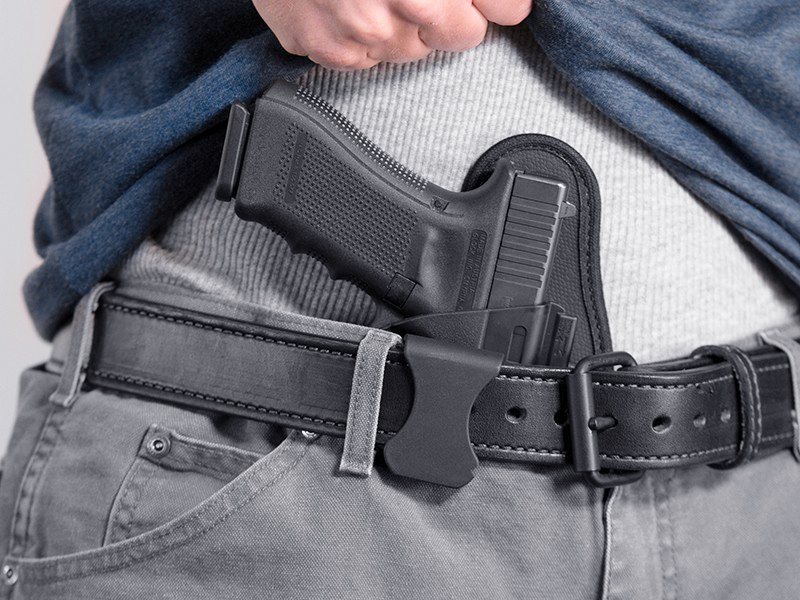Picking a holster position for concealed carry is a very important decision to make. Here’s one opinion from a trusted source. READ MORE
SOURCE: Team Springfield, posted by Mike Seeklander
I am often asked about my handgun carry position and the reason for my choice. There are some subtle, yet important, differences in the defensive draw process versus the competitive draw process. There are several crucial steps to performing a lightning-fast concealed draw.
While drawing a handgun quickly under the stress of an attack is important, there are other critical factors in accessing your handgun.
THE CONCEALED CARRY TASTE TEST
In previous years, I always used some sort of strong-side carry method, including belt-type concealed carry holsters in leather gear made by Bianchi and Safariland, as well as duty holsters when I was a police officer in Knoxville, Tenn. I also carried in a custom shoulder holster for a bit of time after I moved on to the Federal Air Marshal Service and spent a significant amount of time in a seated position.
It was during that mission that I began to consider the downsides to carrying a handgun in the typical strong-side position, simply because accessing the gun while seated was so difficult. I began my first experimentation carrying in the appendix position at that time. In the end, I had key reasons I ended up picking the appendix position as my primary carry method.
WHY APPENDIX?
The appendix carry position offers me more flexibility — the pros vastly outweigh the cons. Whether seated at a desk or in a car, it’s my position of choice. And with shorter, more compact guns like the XD® Mod.2™ Sub-Compact, comfort and concealment are not an issue. Appendix carry allows me to draw the handgun quickly, efficiently and with my support hand if necessary.
Finding the ideal holster that allows for safe re-holstering is a primary consideration when appendix carrying. If safety rules are violated in any way, you will get hurt. Years ago, I took a class with Todd Green that was specific to the appendix carry position. He taught a very deliberate method of re-holstering that stressed keeping the gun pointed in a safe direction at all times. In my own classes, I make students that wish to carry in the appendix position demonstrate safe re-holstering several times with an unloaded gun before allowing it in the class.
The bottom line? The one risk to the appendix carry position is that the gun can be pointed at the lower extremities while re-holstering if the shooter is negligent. This carry position requires attention to detail and training. If you are not committed to both, select a different carry method. Remember:
Select a high-quality holster designed for IWB (“inside the waistband”) carry, and never try the appendix carry position without a holster.
Keep the muzzle pointed away from your body while safely indexing the muzzle in the holster.
Keep your finger indexed along the slide — not in or on the trigger guard.
Use the support hand to clear your cover garment.
Be very slow and deliberate — there’s no rush to put the gun away once it is out.
For more tips, connect with me at Shooting-Performance.com or on Facebook.
FOR MORE, FOLLOW THIS LINK









